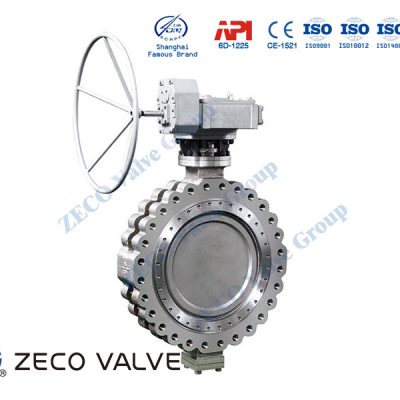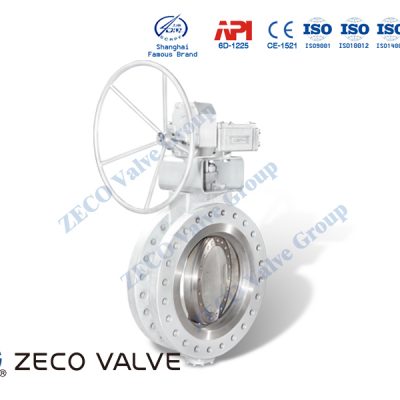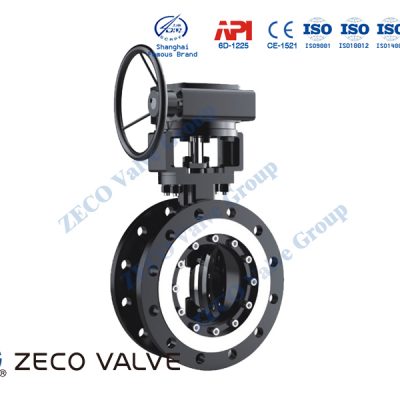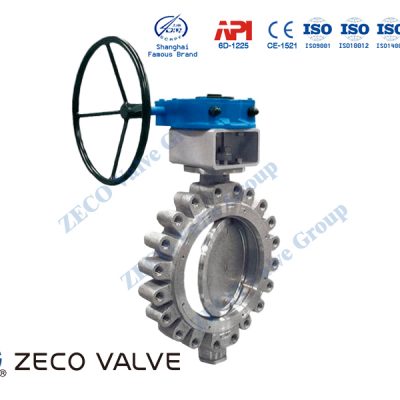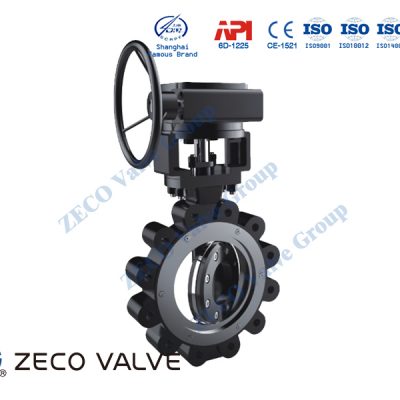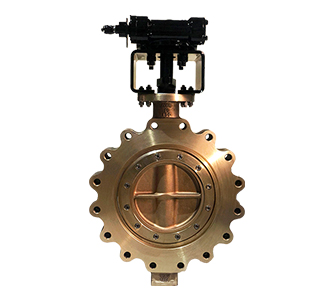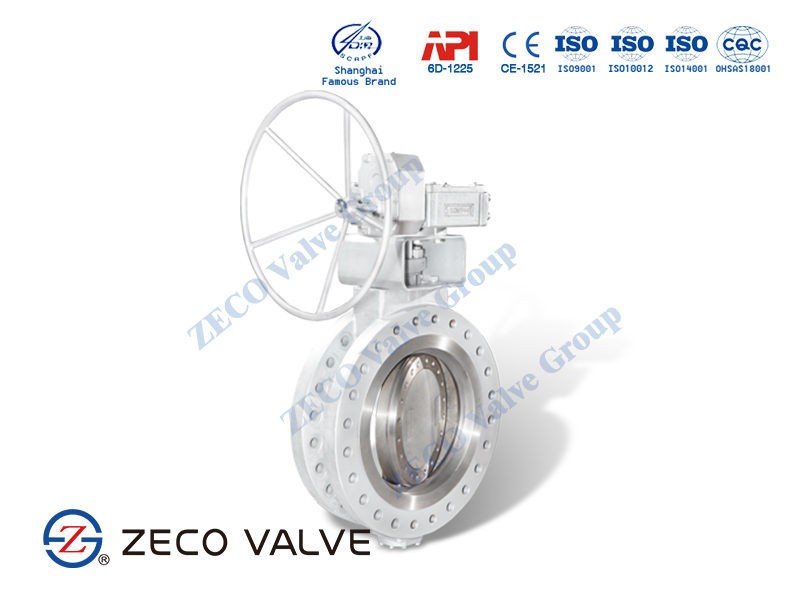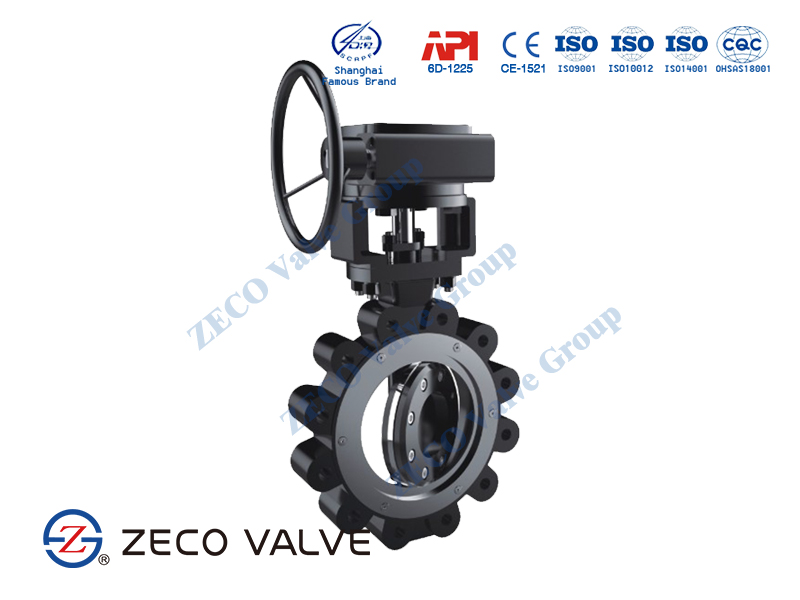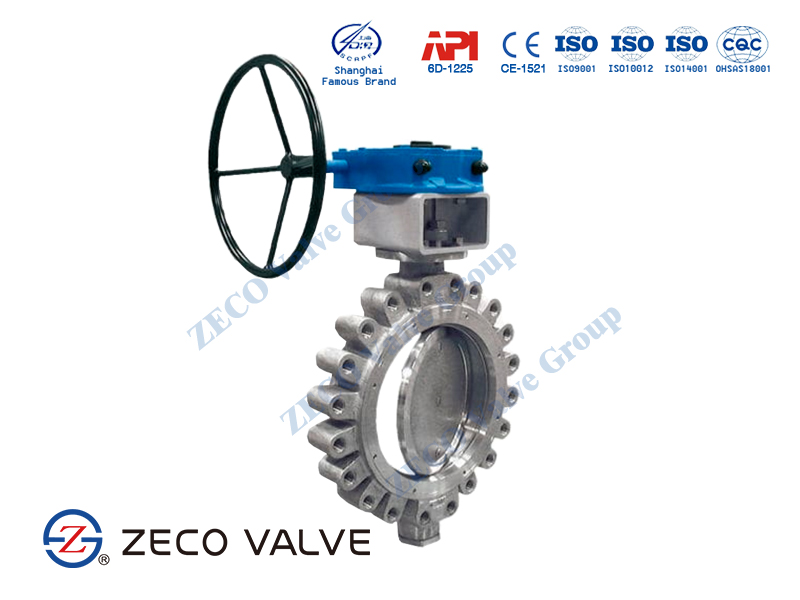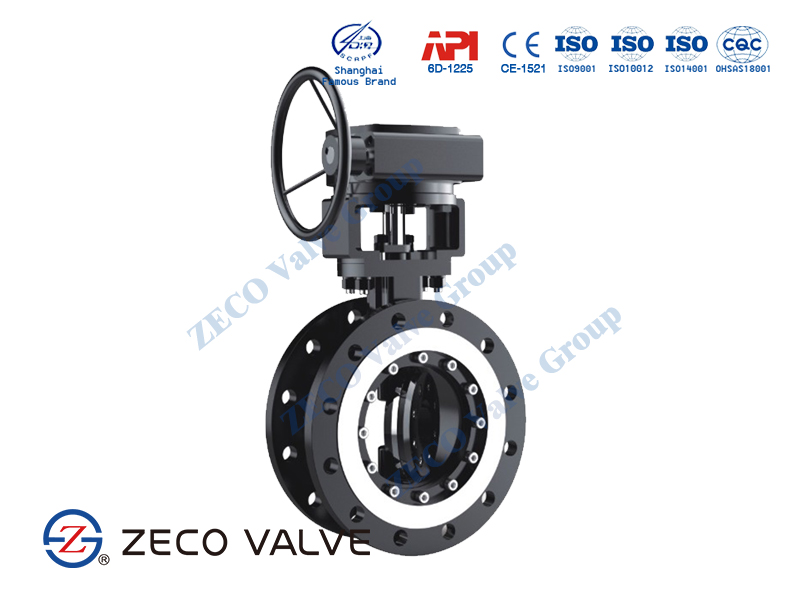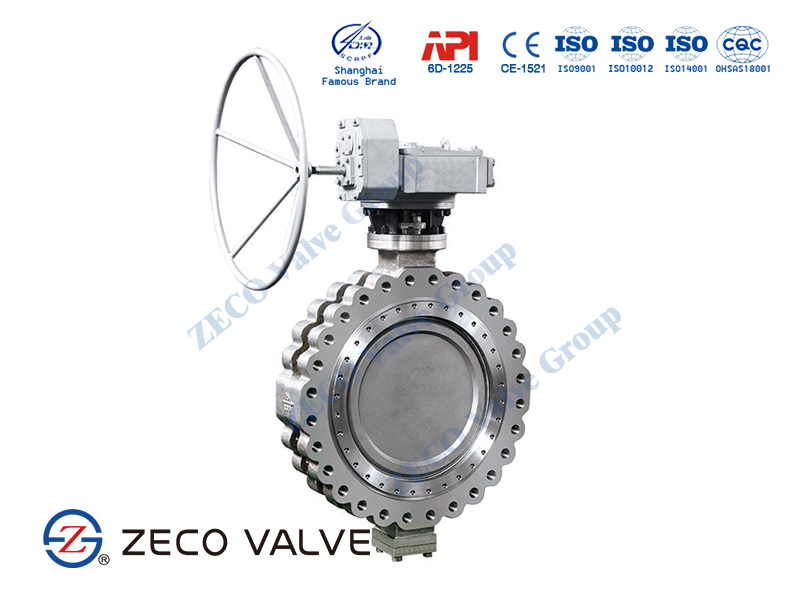ZECO company currently mainly supplies the following five forms of butterfly valves, including triple offset butterfly valve, LUG butterfly valve, high-performance butterfly valve, metal seated butterfly valve, and double offset butterfly valve. Each is designed and produced according to the customer’s needs in the industry. We promise the product quality and the competitive price of our butterfly valve.
Butterfly Valve Type on Disc Closure Design
Concentric Butterfly Valve
The most basic design of a butterfly valve is a centric or concentric butterfly valve. The stem passes through the disc’s centerline, and the seat is the inside diameter periphery of the valve body. This zero-offset valve design is known as resilient-seated because efficient sealing relies on the flexibility of the rubber seat. When closing, the disc first comes into contact with the seat at around 85° during a 90° rotation. Concentric butterfly valves are suitable for low-pressure ranges.
Double Offset Butterfly Valve
In Double Offset, the disk is offset from the valve center line and also from the valve body center line. You can see this in the image where one and two are written. This creates a cam action during operation that lifts the seat out of the seal.
Double offset makes opening and closing smooth as friction is applicable only during the first few degrees of opening and final few degrees of closing, approx 10 degrees of opening and closing.
Triple Offset Butterfly Valve
The unique design of triple-offset valves prevents galling and scratches between the metal seat and the metal disc. The seal only ever comes into contact with the seat at the point of complete closure. Triple-offset valves are generally used in applications that require bi-directional tight shut-off. For example, in oil and gas, chemical factories, LNG/NPG terminals and tanks, and shipbuilding. They are also used for dirty or heavy oil to prevent extrusion.
Butterfly Valve for Sale List
Product Information of ZECO Butterfly Valve
ZECO double eccentric(double offset) butterfly valve: the design upgrades from a single eccentric butterfly valve and double eccentric butterfly valve is currently the most commonly used butterfly valve. The feature is that the stem is offset from the centerline of the disc and the centerline of the valve body. The double eccentric effect makes the disc quickly disengaged from the valve seat after opening, which greatly eliminates unnecessary over-squeezing and scraping of the disc and valve seat, decreases the opening torque, reduces wear, and improves its service life of it. The scraping is greatly decreased, and the double eccentric butterfly valve is also available for metal-to-metal seats, which improves the application of the butterfly valve in high-temperature working conditions. However, the sealing design is of position sealing structure, that is, the contact surface of the valve disc and the seat is in line contact, and the sealing relies on elastic deformation created by the disc pressing valve seat, so it has a strict requirement of valve closure (especially for metal to metal seat), the bearing only suitable for low pressure, which is why people think that butterfly valves are not suitable for high-pressure and low leakage application.
ZECO triple eccentric(triple offset) butterfly valve: to make the valve suitable for a high-temperature application, metal to metal seal should be used, but there will be a leakage in the meantime. In order to achieve zero leakage, soft material for sealing should be considered, but obviously, the soft seal is not suitable for high-temperature applications. Therefore the third eccentricity of the butterfly valve was designed to make up for the shortcoming of a double eccentric butterfly valve. The feature is that the conical axis of the contact surface of the valve disc is deflected to the axis of the valve body, which means, after the third eccentricity, the disc sealing is not eccentric at the axial position of the double eccentric valve stem. In addition, the sealing is an ellipse and asymmetrical in the meantime, one side of the sealing is inclined to the body’s center line and the other side is parallel to it. The biggest difference between double eccentric and triple eccentric butterfly valves is that the sealing design is not a positional seal but a torsion seal, which means, a triple eccentric butterfly valve achieves sealing by sealing the surface pressure of the valve seat. A triple eccentric butterfly valve allows the metal to the metal seat to achieve zero leakage and makes the butterfly valve suitable for medium pressure, high pressure, and high-temperature application.

